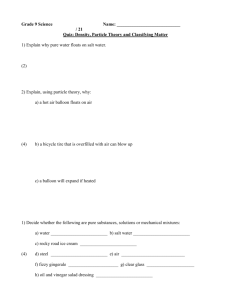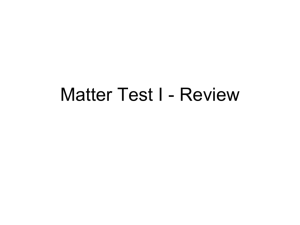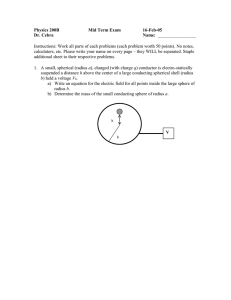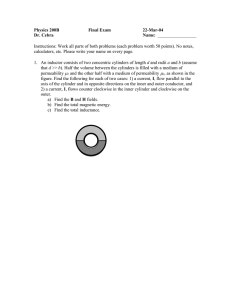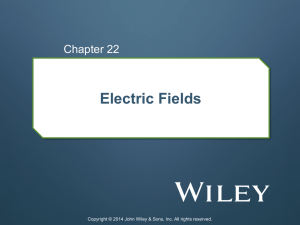Massachusetts Institute of Technology Subject 6.651J/8.613J/22.611J R. Parker
advertisement
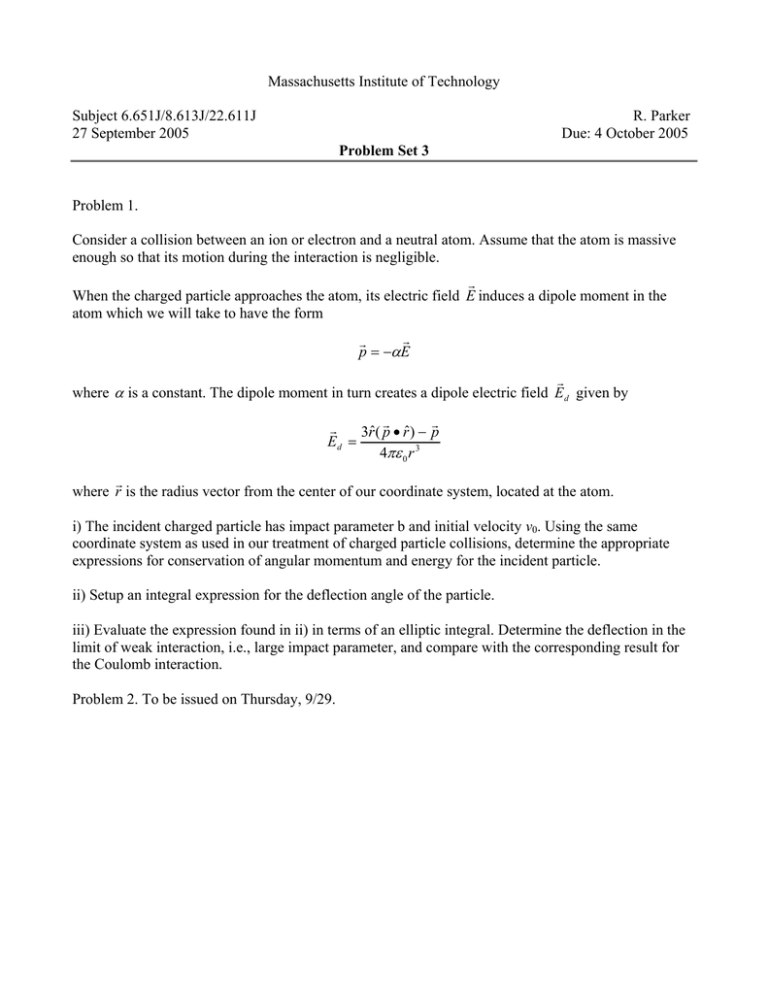
Massachusetts Institute of Technology Subject 6.651J/8.613J/22.611J 27 September 2005 R. Parker Due: 4 October 2005 Problem Set 3 Problem 1. Consider a collision between an ion or electron and a neutral atom. Assume that the atom is massive enough so that its motion during the interaction is negligible. r When the charged particle approaches the atom, its electric field E induces a dipole moment in the atom which we will take to have the form r r p = −αE r where α is a constant. The dipole moment in turn creates a dipole electric field E d given by r r r 3rˆ( p • rˆ) − p Ed = 4πε 0 r 3 r where r is the radius vector from the center of our coordinate system, located at the atom. i) The incident charged particle has impact parameter b and initial velocity v0. Using the same coordinate system as used in our treatment of charged particle collisions, determine the appropriate expressions for conservation of angular momentum and energy for the incident particle. ii) Setup an integral expression for the deflection angle of the particle. iii) Evaluate the expression found in ii) in terms of an elliptic integral. Determine the deflection in the limit of weak interaction, i.e., large impact parameter, and compare with the corresponding result for the Coulomb interaction. Problem 2. To be issued on Thursday, 9/29.

